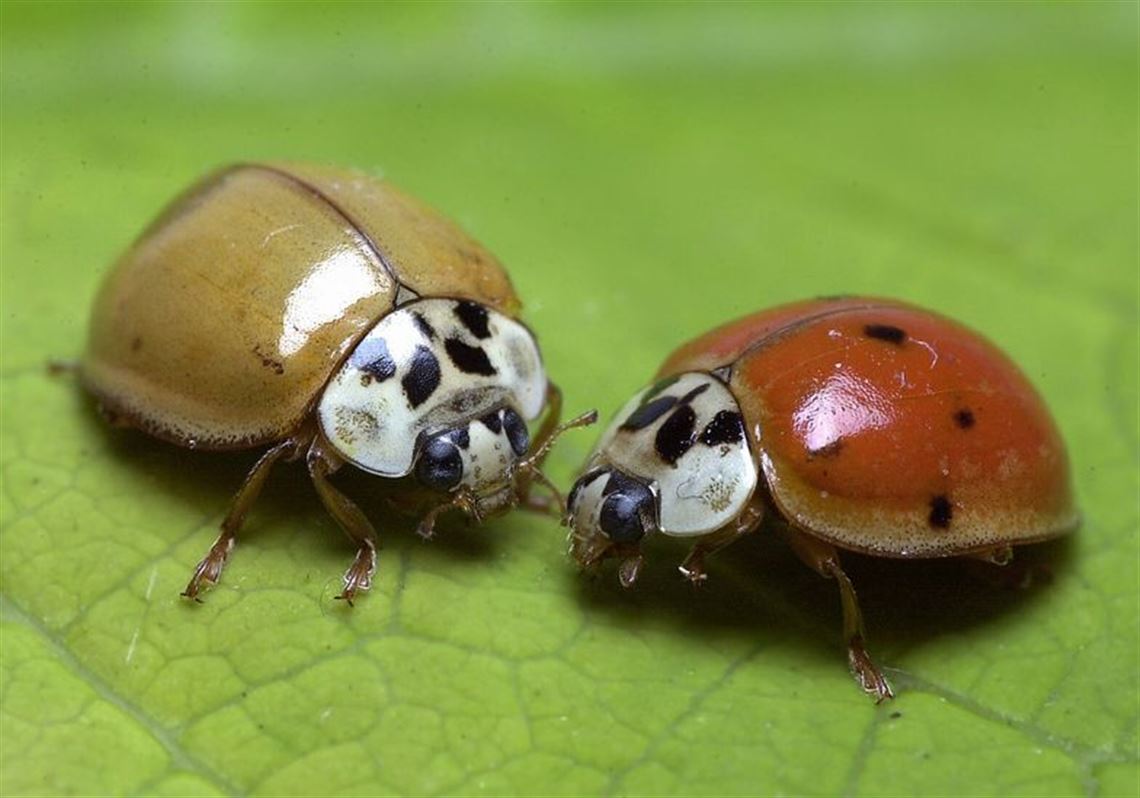Seal your doors and windows, have the vacuum on standby, and get the can of bug killer, but don't head for the hills, because they're there too.
Ladybugs - lots and lots of ladybugs - are once again swirling about and dropping into inconvenient locations, like your soup, hair, or pillow. They're crawling all over the walls, inside and outside, of houses. Some are even taking up where mosquitoes left off and nipping at people's skin.
They are being blamed for mysterious rashes showing up on some children at Sylvania's Central Elementary School.
Dr. Craig Burkhart, a Sylvania dermatologist who's seen some of the children, said some people have a mild reaction to ladybugs.
But he cautioned that we don't suddenly have killer ladybugs. The reaction to the bug bites are mild and “not really causing any major health hazard,” he said.
Still, the annual swarms are generating plenty of calls to exterminators. “I'm surprised your call wasn't one of them,” Bob Marquette, owner of RAM Exterminators, Inc., in Oregon, told a reporter who called. “There's just been an abundance of them.”
The common red ladybug with black speckles isn't causing most of the problems. Instead, it's a species of ladybug known as the multicolored Asian lady beetle. It has a hefty appetite and was introduced in the southern United States to control aphids.
Those annoyed by the Asian ladybugs aren't going to like Mr. Marquette's general advice: “I say wait till winter freezes them out.”
Mr. Marquette, president of the Ohio Pest Control Association, said he tells callers pesticides are the last resort. He recommends homeowners start by sealing windows and doors to reduce entry points. To remove bugs, experts recommend sucking them up with a vacuum cleaner, but - and this is important - dump them right away. Insects sucked up without following this bit of advice will either die and stink or find their way out of the vacuum bag.
Of course, there's the unscientific method of swatting them with a hand, newspaper, or whatever else is handy, but be warned that the bugs leave a yellow stain.
Insect experts say based on the complaints they're getting, this year is as bad or worse than last year's ladybug problem.
“I think the population is moving, so we are seeing more,” said Amy Stone, a horticulturist in Toledo who works for the Ohio extension service. “They eat aphids, so that's a good thing, but it becomes a bad thing once they become numerous. What happens is, where they're originally from, they hibernate in cracks and crevices of cliffs, and since we don't have any cliffs here, they just go anywhere it's warm.”
Tom Ellis, an entomologist and extension agent at Michigan State University, said eventually the problems with Asian ladybugs will “settle down” because Mother Nature will keep the bugs in check.
Overpopulation or predators will reduce their numbers, he said.
First Published October 18, 2001, 10:14 a.m.


